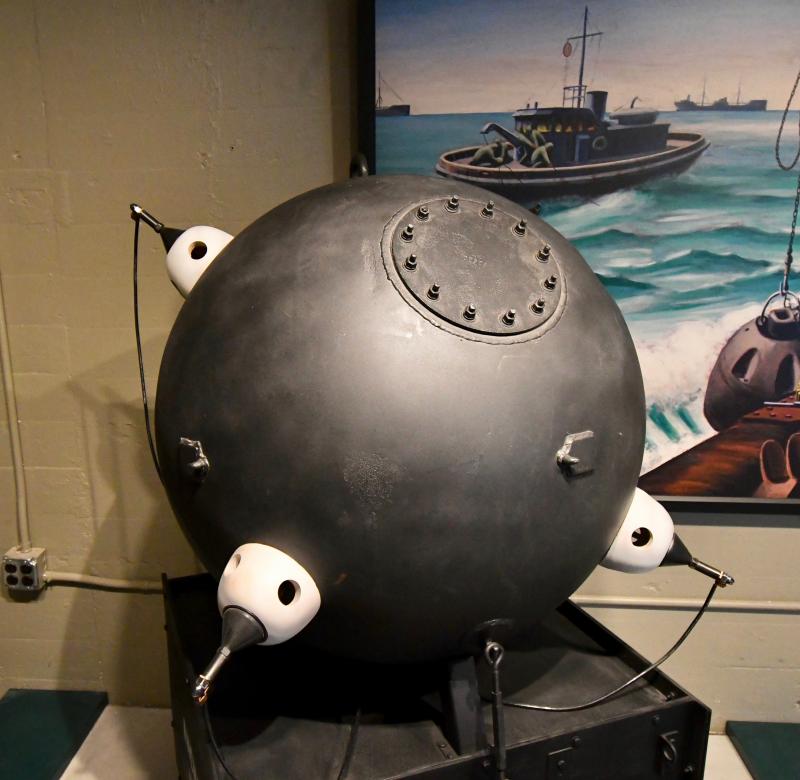Fort Miles was built primarily to defend the Delaware Bay and River against attacks by surface ships.
However, German submarines, known as U-boats, proved to be the true threat. While the mighty battleships of the German navy never crossed the Atlantic Ocean, U-boats caused devastation along the east coast of the United States. From January through February 1942, German submarines sank 28 ships in American waters. The men of Fort Miles quickly realized they needed to adjust to this new danger. The solution? Place explosive sea mines at the mouth of the Delaware Bay.
On Jan. 5, 1942, a mine command was activated at Fort Miles. Composed of the men of the 21st Coast Artillery, the mine command was responsible for planting, maintaining and operating the 455 mines that protected the Delaware Bay. This was not an easy job. Some mines weighed over 3,000 pounds, or about as much as a Ford Taurus. These massive explosives had to be taken out of storage, loaded onto special ships called U.S. Army Mine Planters, and then carefully placed in the ocean. Rough seas and wind could set mines swinging back and forth, and a mistake could mean serious injury or death.
To make matters worse, the first mines used at Fort Miles were M2 and M3 buoyant mines. They floated under the water, attached to large anchors via steel chains. The steel chains in salt water eventually rusted and broke, sending mines wandering. The men of the 21st had to travel as far as Ocean City, Md., to track them down. Eventually they switched to M4 mines, which were designed to sit on the seabed. These did not get pushed around as much and were used until the end of the war.
Another concern was making sure the mines did not sink friendly ships. To avoid this possibility, each mine was fitted with a large cable that ran under the water, onto shore, and into a building called the mine casemate. If something struck a mine, a signal would be sent along that cable. Soldiers in the mine casemate could then check in with spotters to determine if the cause of the signal was a potential threat. If there was a threat, the mine command could detonate one mine, a group of mines, or all 455 mines at once.
Thankfully, no enemy vessels entered these ocean mine fields. The mines have been removed, and the bay is again safe for ships of all nations.
To see actual mines used during World War II, visit the Fort Miles Museum. For information on tours and events, go to destateparks.com/fortmiles.
















































